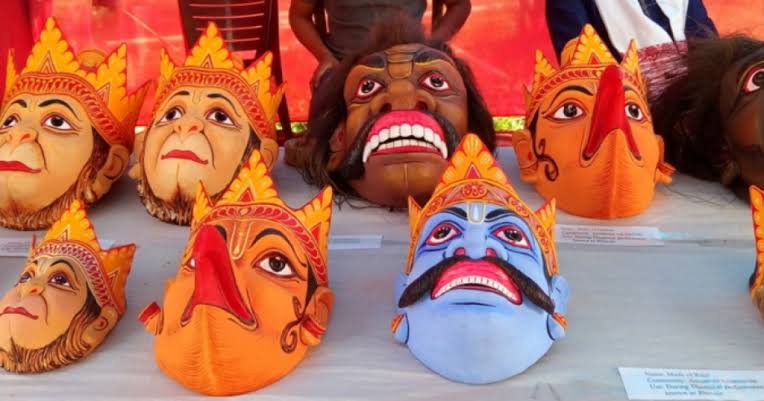Majuli Island's Mask Craft Celebrated With Geographical Indication Tag

- 06 Mar 2024
Why is it in the News?
Adding to their growing national and international recognition, the traditional Majuli masks in Assam were given a Geographical Indication (GI) tag by the Centre recently.
What are Majuli Masks?
- These handmade masks are traditionally used to depict characters in bhaonas, or theatrical performances with devotional messages under the neo-Vaishnavite tradition.
- Majuli, the largest river island in the world and the seat of Assam’s neo-Vaishnavite tradition, has been home to the art of mask-making since the 16th century.
- It was introduced by the 15th-16th century reformer saint Srimanta Sankardeva.
- The masks can depict gods, goddesses, demons, animals and birds — Ravana, Garuda, Narasimha, Hanuman, Varaha Surpanakha all feature among the masks.
- They can range in size from those covering just the face (mukh mukha), which take around five days to make, to those covering the whole head and body of the performer (cho mukha), which can take up to one-and-a-half months to make.
- According to the application made for the patent, the masks are made of bamboo, clay, dung, cloth, cotton, wood and other materials available in the riverine surroundings of their makers.
Why is This Art Practiced in Monasteries?
- Sattras are monastic institutions established by Srimanta Sankardev and his disciples as centers of religious, social and cultural reform.
- Today, they are also centers of traditional performing arts such as borgeet (songs), sattriya (dance) and bhaona (theater), which are an integral part of the Sankardev tradition.
- Majuli has 22 sattras, and the patent application states that the mask-making tradition is by and large concentrated in four of them:
- Samaguri Sattra
- Natun Samaguri Sattra
- Bihimpur Sattra and
- Alengi Narasimha Sattra
What is Majuli Manuscript Painting?
- It is a form of painting which also received the GI tag.
- It originated in the 16th century done on sanchi pat, or manuscripts made of the bark of the sanchi or agar tree, using homemade ink.
- The earliest example of an illustrated manuscript is said to be a rendering of the Adya Dasama of the Bhagwat Purana in Assamese by Srimanta Sankardev.
- This art was patronized by the Ahom kings.
- It continues to be practiced in every sattra in Majuli.
